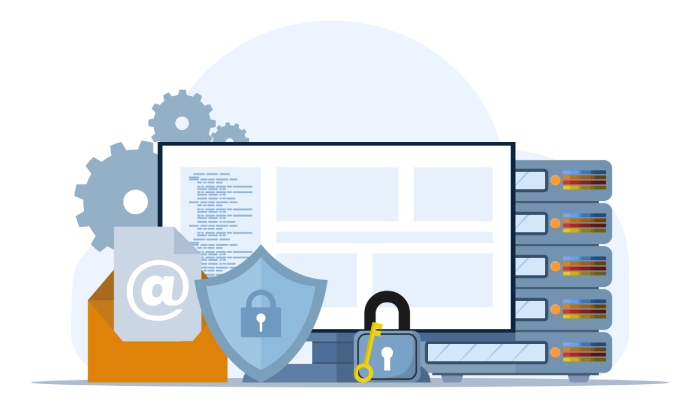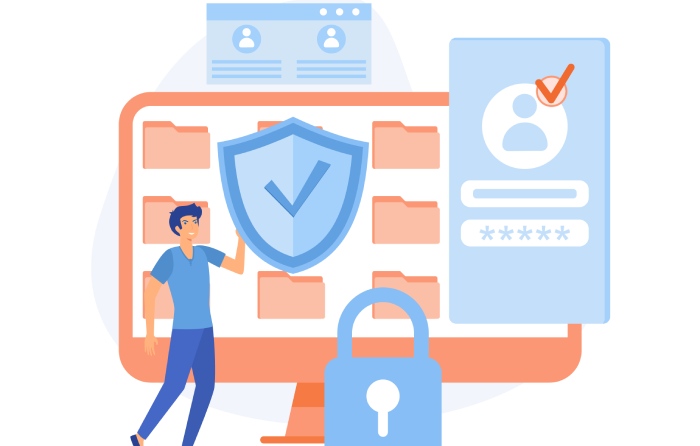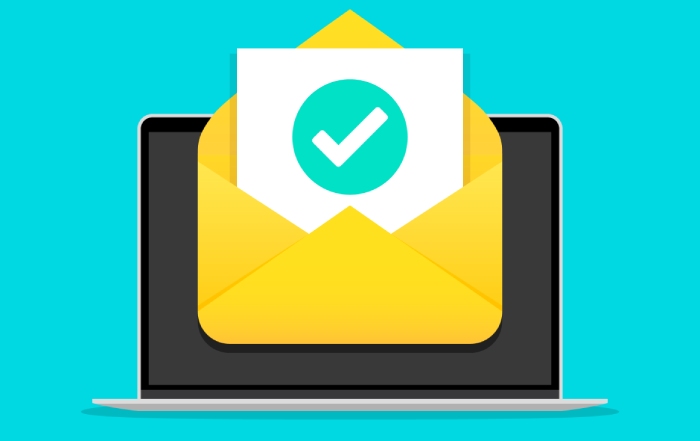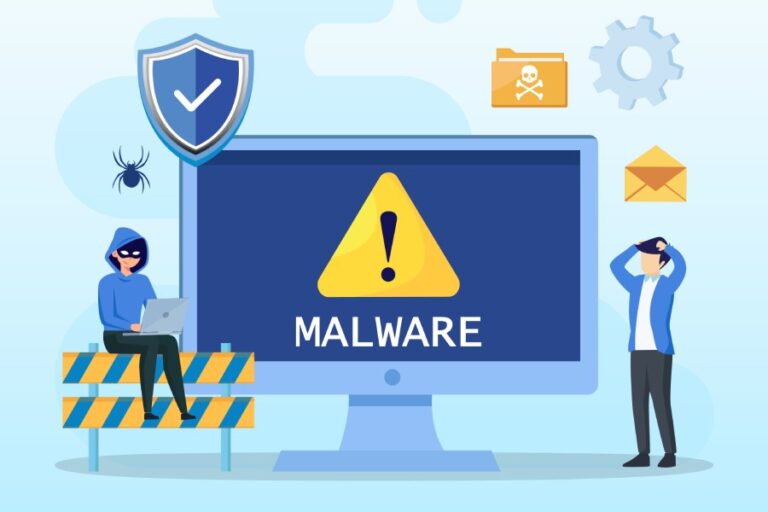Online DMARC Policy Checker Verifies SPF DKIM Alignment To Prevent Spoofing Attacks
In today’s threat-filled digital landscape, protecting your domain from email spoofing and phishing attacks is essential to maintaining trust and deliverability. An online DMARC policy checker plays a crucial role in this defense by verifying the alignment of SPF (Sender Policy Framework) and DKIM (DomainKeys Identified Mail) records with your domain’s “From” address. This verification ensures that only legitimate senders can send emails on your behalf, preventing cybercriminals from impersonating your brand or tricking recipients with fraudulent messages.
By performing real-time DMARC lookups and analyzing policy configurations, these tools help domain owners identify misconfigurations, validate authentication alignment, and enforce strict DMARC rules. The result is stronger email domain protection, reduced spoofing risks, and improved inbox placement rates. In essence, an online DMARC policy checker acts as both a security auditor and a compliance tool—ensuring your SPF, DKIM, and DMARC setup work in harmony to maintain a trusted and secure email ecosystem.
Understanding Email Spoofing and Its Impact
Email spoofing represents a significant threat within the email ecosystem, wherein malicious actors forge the sender address of an email to appear as though it originates from a legitimate domain name. This technique is foundational to many phishing attacks, aimed at deceiving recipients into divulging sensitive information, executing fraudulent transactions, or infecting devices with malware. Spoofed emails exploit the lack of robust authentication mechanisms in legacy email systems that primarily rely on the SMTP protocol.
The consequences of unchecked email spoofing are far-reaching, affecting both domain owners and end-users. For organizations, spoofing can degrade brand reputation, lead to financial losses, and result in diminished email deliverability due to blacklisting by Internet Service Providers (ISPs) and Mail Receivers. For recipients, spoofed emails increase the risk of credential theft, data breaches, and broader compromises of the email ecosystem’s trustworthiness. As such, safeguarding against these attacks necessitates the deployment of sophisticated email authentication protocols centered on validating sender identity and ensuring message integrity.
What is DMARC? Purpose and Importance
Domain-based Message Authentication, Reporting, and Conformance (DMARC) is an advanced email authentication protocol that strengthens email security by using SPF (Sender Policy Framework) and DKIM (DomainKeys Identified Mail). It allows domain owners to publish a policy in their DNS records, guiding mail servers on how to handle emails that fail authentication checks.

DMARC helps organizations gain visibility and control over domain misuse through policy enforcement and reporting. By ensuring SPF and DKIM alignment with the sender’s domain, it prevents spoofing and enhances domain protection. Its reporting features, including aggregate and forensic reports, provide valuable insights into authentication failures, helping maintain secure and trustworthy email communication.
The Role of SPF in Email Authentication
SPF, or Sender Policy Framework, is a foundational email authentication mechanism designed to specify which IP addresses or SMTP servers are authorized to send email on behalf of a particular domain. The SPF record is published as a DNS TXT record tied to the domain name, making DNS configuration and DNS record testing critical to accurate policy distribution.
When an email is received, the receiving mail server performs SPF validation by comparing the sender’s IP against the authorized IPs detailed in the SPF record. This authentication check helps detect and block unauthorized sources attempting to send emails purporting to be from that domain. SPF supports alignment modes in DMARC by verifying that the domain in the envelope MAIL FROM or Return-Path header matches the domain in the From header, a process known as SPF alignment.
One limitation of SPF is that it requires the sender’s IP to be included explicitly in the SPF record, which can be challenging in environments where multiple third-party services send email on behalf of the domain. Proper SPF record maintenance and adherence to email sending requirements are therefore crucial to prevent SPF failures and ensure effective email spoofing protection.
The Role of DKIM in Email Authentication
DomainKeys Identified Mail (DKIM) enhances email authentication by affixing a digital signature to the email header, encrypted with the domain owner’s private key. The corresponding public key is published as a DNS TXT record associated with the sending domain, enabling receiving servers to validate the signature’s authenticity and ensure message integrity.
Unlike SPF, which evaluates the sender’s IP, DKIM focuses on the cryptographic signing of the message body and selected headers, thwarting message tampering in transit. DKIM also supports domain alignment as part of the DMARC policy, referred to as DKIM alignment, where the signing domain in the DKIM signature must align with the domain in the From header according to defined alignment modes, such as relaxed mode or strict mode.
DKIM signatures are integral to the email authentication protocol landscape due to their resilience against forwarding scenarios that might otherwise invalidate SPF checks. However, maintaining proper key management and DNS configuration to avoid misconfigurations is essential. Email security platforms and authentication tools like DMARC Inspector or DMARC Record Wizard assist domain owners in testing DKIM records and verifying adherence to email sending best practices.

How DMARC Verifies SPF and DKIM Alignment
DMARC’s core function is to unify SPF and DKIM authentication under a single policy framework that not only validates individual authentication results but crucially enforces alignment between these mechanisms and the domain name visible to the email recipient. DMARC verifies SPF and DKIM alignment by comparing the authenticated domains returned in the SPF and DKIM checks with the domain in the email’s “From” header, the address displayed to end-users.
Alignment Modes in DMARC
There are two alignment modes defined in DMARC for SPF and DKIM:
- Relaxed Mode: The domains are considered aligned if the authenticated domain is a subdomain of the domain in the From header. This mode offers flexibility for domain hierarchies and delegated email services.
- Strict Mode: The authenticated domain must exactly match the domain in the From header, ensuring tighter control over message validation.
Domain owners specify the desired alignment mode within the DMARC record via value tags to tailor policy enforcement according to their email ecosystem’s architecture.
Policy Enforcement and Message Disposition
Upon verification of SPF and DKIM alignments, the DMARC policy dictates the message disposition handling of emails that fail authentication checks. These actions include:
- None Policy: No specific action is taken; mainly used for monitoring and data collection via reporting.
- Quarantine Policy: Suspicious emails are flagged and routed to recipients’ spam or junk folders.
- Reject Policy: Emails failing DMARC checks are outright rejected by the receiving server, preventing delivery.
Email service providers like Google, Yahoo, and Microsoft widely support DMARC policies, enhancing email deliverability for domains that correctly implement and enforce these policies.

Reporting and Visibility
A critical advantage of DMARC is its integrated reporting structure. Domain owners receive aggregate reports, summarizing authentication results across all receiving servers, and optionally forensic reports, providing detailed failure reports on potentially abusive emails. These reports, transmitted in XML feedback format, enable domain owners to improve DNS configuration, identify misconfigurations in SPF or DKIM records, and adjust policy parameters to optimize email domain protection.
Utilizing Online DMARC Checkers
Online DMARC record checkers, including tools such as MXToolbox, EasyDMARC, and dmarcian, provide domain owners and administrators with capabilities to perform DMARC lookup, validate SPF and DKIM record integrity, and check DMARC policy distribution. These tools help pinpoint misconfigurations, validate sender alignment, and simulate policy enforcement results, facilitating proactive email authentication enforcement and robust email security posture.
By integrating SPF and DKIM authentication results with domain alignment verification, DMARC significantly mitigates email spoofing threats. The use of an online DMARC checker streamlines the process of validating and maintaining an effective DMARC policy, thereby enhancing email domain abuse protection and increasing overall email deliverability within the global email ecosystem.
Introduction to Online DMARC Policy Checkers
In the complex ecosystem of email authentication, ensuring that your domain’s DMARC record is correctly configured and enforced is vital for robust email security. Online DMARC policy checkers are specialized tools designed to perform real-time DMARC lookup and validate your DMARC record against the standards set by RFC 7489. These tools analyze the Domain-based Message Authentication, Reporting and Conformance setup of your domain by verifying the syntax, alignment modes, policy enforcement levels, and reporting configurations. By facilitating accurate and immediate feedback, DMARC record checkers empower domain owners and email administrators to maintain optimal email domain protection, minimizing the risk of email spoofing and phishing attacks.
Popular platforms such as mxtoolbox, dmarcian, and EasyDMARC offer comprehensive DMARC check tools that provide insights into your domain’s TXT record in DNS and validate the integration of SPF (Sender Policy Framework) and DKIM (DomainKeys Identified Mail) as authentication mechanisms. Given the essential role of DMARC in email deliverability and security, online DMARC checkers serve as indispensable resources within the email authentication protocol landscape.
Features and Benefits of Using an Online DMARC Checker
Comprehensive Syntax and Policy Validation
A critical feature of DMARC checkers is the ability to parse and scrutinize the DMARC record’s syntax and semantics. They check for correct construction of value tags such as `v=DMARC1`, `p=reject`, `rua`, `ruf`, and alignment parameters ensuring your DMARC policy is enforceable without errors. Misconfigurations can lead to ineffective policy distribution or message disposition issues, resulting in unprotected email domains.

Authentication Alignment Analysis
Online DMARC record checkers typically perform SPF and DKIM alignment verification—ensuring that the email’s “From” domain aligns properly with the domains specified in SPF and DKIM records. This alignment mode can be set to either relaxed or strict, affecting message validation processes. This function assists domain owners in verifying that their sender alignment policies are properly enforced, which is crucial for email spoofing protection.
Reporting Insights and Aggregate Report Configuration
Many DMARC check tools provide analysis of reporting mechanisms including aggregate and forensic reporting options. They validate the presence and format of reporting URIs and verify reporting intervals, aiding domain owners in receiving XML feedback in the correct format to monitor email flow visibility and detect abuse patterns.
Detection of Common Misconfigurations
Robust online DMARC checkers detect potential misconfigurations such as the absence of subdomain policies, failure to specify quarantine or reject policies, or non-compliant usage of policy tags like `pct` (percentage tag). Early detection through these tools prevents accidental policy enforcement flaws that could either block legitimate emails or leak protection.
User-Friendly Interfaces and Integration
Leading platforms such as dmarcian and EasyDMARC offer intuitive user interfaces along with step-by-step guidance to aid even non-technical users in implementing best practices for email sending requirements. Additionally, some DMARC check tools support API integrations enabling automated DNS record testing directly from email security platforms or within broader enterprise email programs.
Step-by-Step Guide to Using a DMARC Policy Checker
1. Initiate a DMARC Lookup
Access a reputable DMARC record checker such as mxtoolbox, DMARC Inspector, or the DMARC Record Wizard. Enter your domain name into the DMARC lookup field to begin the inspection of your domain’s DNS TXT record specifically containing the DMARC policy.
2. Review DMARC Record Syntax and Version
The tool will first verify the DMARC version (`v=DMARC1`) and confirm that the record is published as a TXT record under the `_dmarc` subdomain of your domain name. They will highlight any syntax errors, incomplete value tags, or version mismatches.

3. Analyze the DMARC Policy Attributes
Next, evaluate the core DMARC policy including the `p` tag which defines the policy enforcement level — commonly set to none, quarantine, or reject. Check for the presence of `sp` (subdomain policy), `pct` (percentage of messages to which the policy is applied), and alignment modes (`adkim`, `aspf`).
4. Verify Reporting and Aggregate Report Settings
Confirm that the DMARC record includes appropriate `rua` and optional `ruf` tags to receive aggregate reports and forensic reports, respectively. Validate the reporting format and URIs to ensure compatibility with email service providers and receivers like Google, Yahoo, and Microsoft.
5. Assess SPF and DKIM Alignment
The checker will examine if SPF and DKIM are correctly implemented and aligned with the domain’s “From” header in relaxed or strict mode. This assessment is critical because successful message validation depends not only on the DMARC policy but also on the proper setup of these authentication mechanisms.
6. Receive Recommendations and Reports
Upon completion, the DMARC checker provides a detailed report highlighting areas of strength and points of failure or improvement, guiding domain owners in refining their email authentication protocol. Such insights are essential for optimizing email deliverability while defending against email domain abuse.
Common Challenges in DMARC Implementation and How Online Checkers Help
Complex Syntax and Configuration Errors
Domain owners frequently struggle with configuring DMARC records correctly due to intricate syntax and multiple value tags requiring precision. Misplaced commas, incorrect tag formatting, or incomplete policy statements can undermine enforcement. Online DMARC record checkers simplify this by providing automated syntax validation and instant feedback.
Alignment Mode Confusion
The distinction between relaxed and strict alignment modes in SPF and DKIM often causes configuration hiccups. Choosing the wrong mode can cause legitimate emails to fail validation or allow spoofed messages through. DMARC check tools enhance clarity by clearly explaining alignment implications and verifying that policies conform to the intended mode.

Subdomain Policy Mismanagement
Misconfigurations in subdomain policies (e.g., absence of an `sp` tag) may lead to unprotected subdomains, exposing the brand to spoofing. DMARC lookup tools alert domain owners to such gaps, enabling full domain-wide email protection and reinforcing policy distribution.
Reporting Setup Issues
Receiving actionable forensic reports and aggregate reports is fundamental for monitoring the email environment, but improper `rua` or `ruf` tag configurations hinder this. A DMARC checker ensures reporting tags are correctly implemented, with valid URIs in accepted formats, maximizing the visibility of email flow and abuse detection.
Overcoming Policy Enforcement Risks
Domain owners might hesitate to move directly to strict reject policies due to potential email deliverability risks. Many online DMARC checkers recommend gradual policy percentage enforcement (`pct` tag) and suggest best practices to test and evolve policies safely.
Future Trends in Email Authentication and Spoofing Prevention
Increased Adoption of DMARC Enforcement
As phishing attacks continue to evolve, email ecosystems comprised of major Internet Service Providers like Google, Yahoo, and Microsoft are promoting widespread adoption of DMARC with strict policy enforcement. Future email security platforms will push for automated policy updates aided by continuous DMARC record checking and validation.
Integration of AI and Machine Learning
Emerging technologies in AI will enhance authentication checks by analyzing patterns of email behavior beyond traditional mechanisms like SPF and DKIM. Intelligent DMARC checkers will provide proactive threat identification, adaptive policy recommendations, and dynamic failure reporting, making email domain protection more resilient.
Expansion of Reporting Capabilities
Reporting formats and forensic reporting options under DMARC will become more standardized and detailed, with enhanced XML feedback mechanisms and real-time telemetry dashboards. These improvements will enable domain owners to achieve unprecedented email flow visibility and rapid incident response.

Unified Authentication Protocol Suites
Future developments may see tighter integration of DMARC with other authentication protocols such as BIMI (Brand Indicators for Message Identification) and ARC (Authenticated Received Chain) to improve email sender reputation and authenticity verification across the entire SMTP chain.
Simplification and Automation via Security Platforms
Leading email security platforms are likely to embed automated DNS configuration and DMARC record creation tools to assist domain owners in managing authentication protocols without requiring deep technical expertise. Tools like the DMARC Record Wizard and DMARC Inspector could evolve into fully automated policy distributors that instantaneously correct misconfigurations.
FAQs
What is the primary purpose of a DMARC record?
A DMARC record enables domain owners to publish policies that instruct mail receivers on how to handle unauthenticated messages, helping to block email spoofing and phishing by aligning SPF and DKIM authentication results.
How does an online DMARC checker improve email security?
An online DMARC checker verifies the correctness of DMARC records, alignment modes, and reporting configurations, identifying misconfigurations that could leave a domain vulnerable to email spoofing and enhancing overall email domain protection.
Can DMARC prevent all phishing attacks?
While DMARC significantly reduces the risk of email spoofing by enforcing authentication protocols, it is not a complete solution. Combined use with SPF, DKIM, and vigilant reporting monitoring improves protection but does not eliminate all phishing risks.

What happens if my DMARC policy is set to ‘none’?
The ‘none’ policy is primarily for monitoring purposes, allowing domain owners to receive aggregate reports without affecting email flow disposition. It is often the first step before moving to stricter quarantine or reject policies.
How do DMARC aggregate reports help?
Aggregate reports provide domain owners with detailed summaries of authentication results for emails sent on behalf of their domain. These reports enable monitoring of potential email domain abuse and evaluation of email authentication effectiveness.
Why is alignment important in DMARC?
Alignment ensures that the domain in the email’s “From” header matches the domain authenticated by SPF and/or DKIM. Proper alignment prevents attackers from impersonating the domain, strengthening message validation.
Key Takeaways
- Online DMARC record checkers are essential tools that validate the correctness and effectiveness of Domain-based Message Authentication, Reporting and Conformance policies, enhancing email authentication and email domain protection.
- These checkers perform comprehensive DNS TXT record testing, authentication alignment verification, and reporting configuration validation to detect misconfigurations and improve email security.
- Step-by-step guidance provided by DMARC check tools facilitates better policy enforcement, enabling domain owners to adopt strict quarantine or reject policies safely.
- Emerging trends include AI-enhanced authentication checks, expanded reporting capabilities, and automation of DMARC policy distribution to address evolving phishing and spoofing threats.
- Regular use of DMARC lookup and record checking, combined with strong SPF and DKIM implementation, is paramount to maintaining resilience against email spoofing and improving overall email deliverability.







